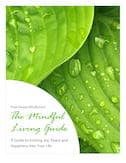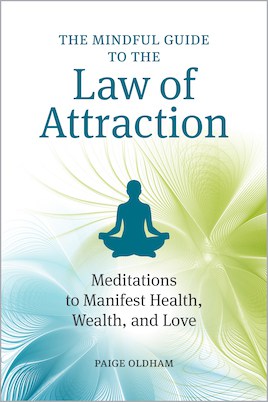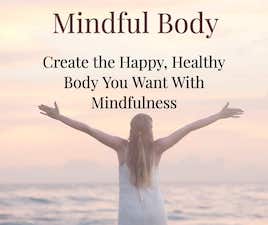I’m honored to host a guest post by Courtney Carver from Be More With Less. She’s been an inspiration to me in my personal and professional life, online and off.
This week she’s releasing her new book, Soulful Simplicity: How Living With Less Can Lead to So Much More, which I highly recommend. In this book, she shows us how to simplify to create more with less—more space, more time, and even more love. She invites us to look at the big picture, discover what’s most important to us, and reclaim lightness and ease by getting rid of all the excess things and busyness.
In her post here, she describes the simple yet powerful ways you can pause amidst the busyness, stress, and anxiety of the day to invite in a little peace. Exactly what we all need in the midst of the holiday season.
As my mindfulness practice has developed, I’ve discovered how powerful these little pauses can be to change your life for the better. If you want to change negative habits or thought patterns, improve your relationships or create a little peace in your daily craziness, you’ll want to read this post.
Have you ever reacted from a place of anger or exhaustion? Do you look back on your day and realize that you checked your phone or digital device 100 times out of habit, boredom, or angst? There are consequences when you forget to pause, and we all forget. We get busy, tired, or distracted and forget to pause.
If we want peace, we have to embrace the power of the pause.
Making time to pause gives you a chance to take in your surroundings, check in with how you feel, quiet your mind and appreciate the present moment.
How to Practice the Pause
Take pictures. Beauty and awe are everywhere, but when we run through the day with tunnel vision, we miss it. I use my camera to capture beautiful, ordinary moments every day. My family teases me a bit about my obsession with the sky, but I can’t get over its magnificence. It’s so nice to pay tribute to something beautiful by taking the time to capture its image.
Drink Tea. Simplicity author Leo Babauta says, “I find that if I’m having trouble concentrating on one thing, pausing to brew some tea is a great way to regain that focus. I’ve gotten some of my best writing done with the aid of a cup or bowl of tea.” Use the ritual of drinking tea to practice the pause.
Stand up. If you sit at a desk, in your car or in front of a computer for most of the day, alternate standing and sitting throughout the day. Pause as you sit or stand and notice that you are moving positions. Give your eyes, back and brain a break. For an extra long pause, take a big stretch before sitting or standing.
Respond thoughtfully. If you are used to multitasking and reacting to email, voicemail and other things all day, batch your decision-making. Spend an hour thoughtfully responding to email and then close your email and turn off your alerts. You don’t need to know when someone emails you or updates their Facebook page. Instead, check in when you are ready. Pause and respond a few times a day instead of reading and reacting all day long.
8 Places to Pause for More Peace
- Pause when you wake up.
Before you rush to check email, drink coffee, or start your day, pause. Wiggle your toes under the covers. Stretch your arms in the air. Consider how you want to feel as you move through the day. Take a deep breath.Before you hit the snooze button or jump out of bed and into your email, pause, stretch and be grateful for the possibilities that the day holds. If you want to be more productive and peaceful throughout the day, create a meaningful morning routine. - Pause in conversation
If you have a conversation and your mind is racing, you will talk over the people you love or leave the conversation without hearing what was said. Hearing words is often different from understanding the message. You might not even know you are doing it, so to prevent a missed opportunity to connect, pause before you get started. Be present. Listen and pause again before responding. Don’t be afraid of the silence. The precious pause you take before engaging not only brings you back to the moment, but it demonstrates that you value the heart, time and attention that someone else is bringing to the table. The pause gives you permission to show up. - Pause before you pick up your phone
If you are bored, or worried, you might be checking your phone or digital device more than you think. Checking email and other apps might also be a way of procrastinating. I’m guilty! I recently realized that my mindless checks were easier than finishing something that felt overwhelming. When I realized what was going on, I hid my distracting apps, like email, Google, and social media and got back to work. After being without them for a week, I’m thinking of deleting most of them because I wasn’t getting anything from my check-ins. Put a Post-it note on your phone with the word, pause or breathe on it. It will help you break the habit of checking in to check out. - Pause after you are hurt
The worst time to react is when you feel hurt. There is too much fuel on the fire of your pain to think clearly. Better to pause, take a walk, sleep on it, or do what you need to do to craft a response that will be helpful instead of hurtful. Otherwise, you get caught in a cycle with no resolution. This could be something simple like someone criticizing your work, or more complicated like an argument with someone you love. No one else can give you peace. Take the time you need because, when you pause, you can remember who you are, and then you’ll have peace. - Pause before you hurt someone else
Before you send an angry email, respond to a Facebook post, or engage in a hurtful conversation or interaction, pause. Ask yourself if the situation requires your response at all. As Mandy Hale says, “You don’t have to show up to every argument you are invited to.” - Pause during a meal
What happened to lingering? If it takes you more time to create a meal than it does to enjoy it, turn on soft music, put your fork down, savor each bite, make eye contact and linger. Food will fuel your body and your soul, if you let it. You will eat less and make connections and memories that last. - Pause before you numb
A bag of chips, glass of wine, or Netflix binge is so much easier than feeling your feelings, but before you decide to numb out, pause. Ask yourself if this is an event or a pattern. If pushing your feelings down is becoming a routine, pause and write what you are feeling on paper. You never have to share the words or do anything about them. Just get them off your heart and onto a piece of paper. Then decide what’s next. - Pause before you go to sleep.
If you usually fall into bed exhausted after a long day and then immediately start running through your to-do list or worrying about things left undone, pause. Sit up in bed and take a gentle breath in and out. Jot down a few things on your mind or consider a guided meditation to help you let the day go.
Pause for more peace in your life. Create that space for your heart and mind. If you are feeling anxious or worried or upset about the craziness around you, engage in an activity you love or serve others with love. When you turn your focus to helping, you’ll forget all about the crazy.
Remember that you get to make a choice. Choose to under-react. Choose to take a few (hundred) deep breaths. Choose a long walk. Choose to write down your heart. Don’t let the crazy in. Just because everything is crazy around you doesn’t mean everything has to be crazy within you.
More peace is only a pause away.
Courtney Carver changed her life by simplifying it after a devastating diagnosis in 2006. She’s the founder of bemorewithless.com and minimalist fashion challenge Project 333. Her new book Soulful Simplicity is available from Tarcher/Perigee, a division of Penguin Random House. Carver shows us the power of simplicity to improve our health, build more meaningful relationships, and relieve stress in our professional and personal lives.
Create the life you want: Combine the law of attraction with mindfulness
The law of attraction suggests that our positive or negative thoughts bring about positive or negative experiences. My latest book, The Mindful Guide to Law of Attraction, pairs that belief with the powerful practices of mindfulness. Through intentional breathing, writing, and engaging, you’ll hone a method for manifesting health, wealth, and love―the elements of happiness.
Let the law of attraction work for you by adopting its basic steps of identifying and visualizing the things you desire. Then use 45 practical meditation techniques included in the book to achieve awareness. By concentrating your positive energy on obtaining your wants, you’ll give yourself permission to receive them.
To your happiness! ~Paige

You can find this book at Amazon, Barnes & Noble, Books-A-Million, and Indigo.









 The Mindful Living Guide
The Mindful Living Guide




Such great advice here Paige. I find its far easier to relax and pause, than to simply react 🙂
xoxo, Z~
I love these ways to pause more often. I find “the pause” a gentle yet powerful ways to change one’s life.
Couldn’t agree with you more, Sandra! The pause allows just enough time to make an intentional response instead of the usual reaction.
This is wonderful advice – especially this time of year. I like and am going to remember to pause in conversation and at meals. Thanks for the tips. Happy holidays! 🙂
Thanks, Debbie! Yes, I’ve found pausing in conversation is a gift to the person you’re speaking with as it allows them to feel heard.